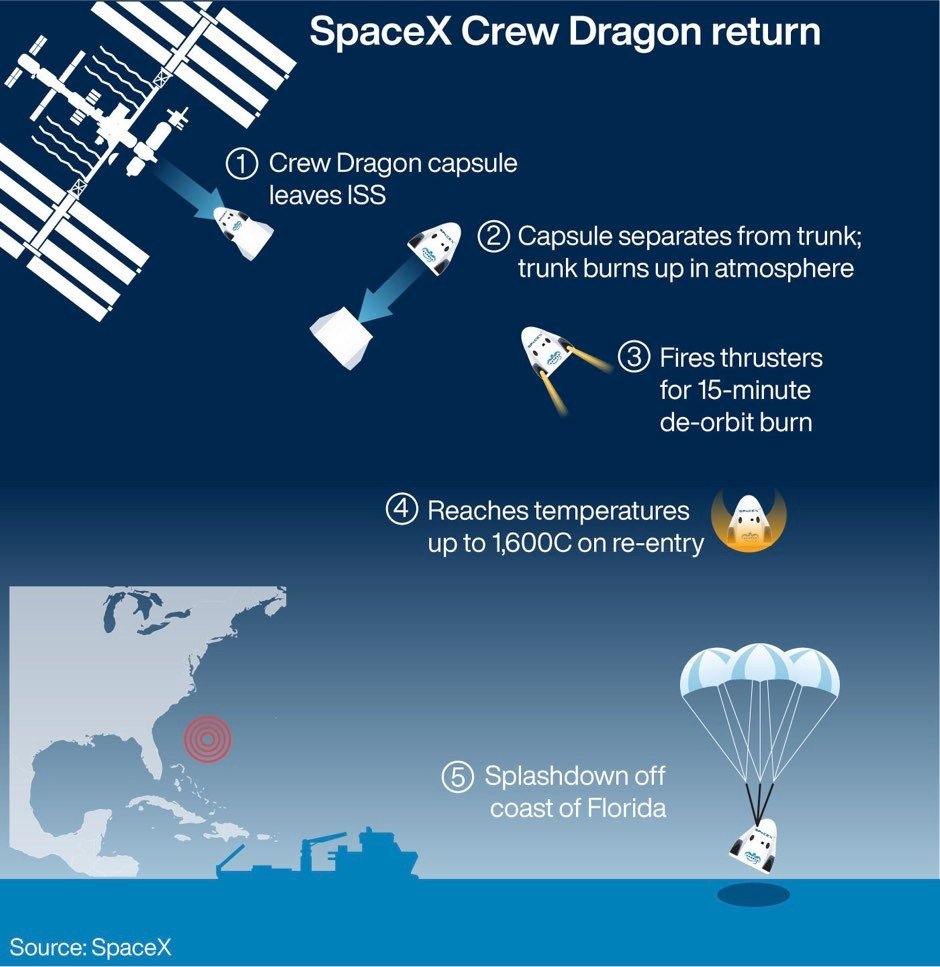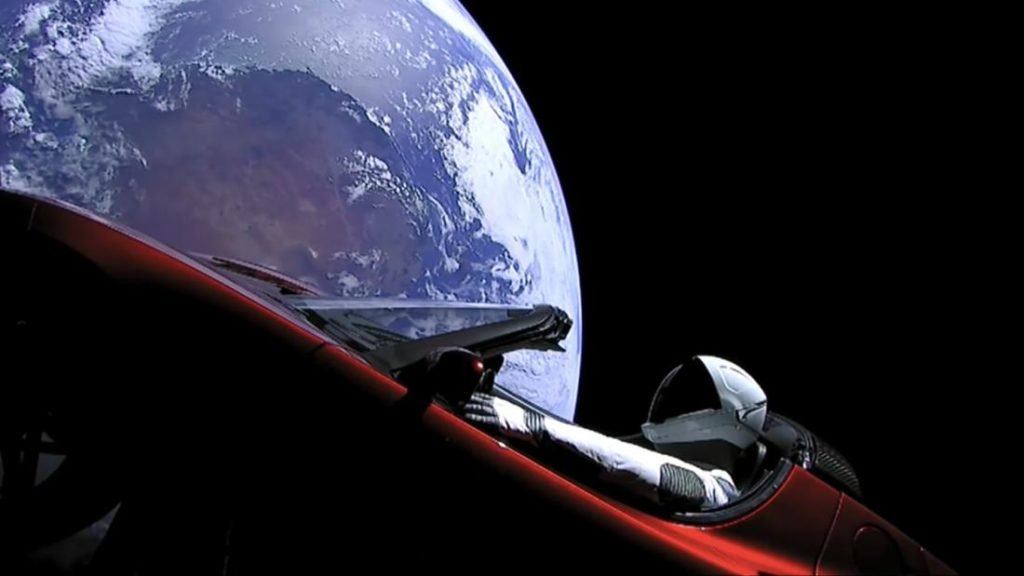For a long time, Interplanetary ventures and colonizations have only been an aspiration but now it seems like Spacex can bring this to reality, in the near future.
Space Exploration Technologies Corp commonly know as SpaceX is an American aerospace manufacturing company founded by Elon Musk in 2002. Its goal is to make low-cost space travel which he believes will enable the colonization of Mars. The company chose to develop reusable liquid- propellant rockets for leveraging the same. This vision was accomplished when Falcon 9 was able to make its first propulsive Landing in 2015.
Some of their other key Launches include the Falcon 9 “Full Thrust” and the iconic Falcon Heavy. The Full Thrust is an upgraded version of the Falcon 9 v1.1. , the vehicle was modified to facilitate booster reusability for a larger range of missions and to carry substantial payloads to geostationary orbit and perform a propulsive landing for recovery.
The Falcon Heavy is a heavy-lift launch vehicle designed specifically for higher payload capacity and also, currently holds the record for being the operational launch vehicle with largest payload. The first launch of the rocket carried a Tesla Roadster as dummy payload on February 6, 2018. The second launch occurred on April 11, 2019 and all three booster rockets successfully returned to earth. The third launch successfully occurred on June 25, 2019.
VTVL
Vertical takeoff, vertical landing (VTVL) is a form of takeoff and landing for rockets. After several failed attempts, SpaceX victoriously implemented this method in the first stage of one of their widely popular and commercially successful vehicle is SpaceX’s Falcon 9.

This Technology was adopted to achieve retro-propulsive landings, Key requirements are:
- Thrust must be greater than weight
- Thrust is required to be vectored and requires some degree of throttling
- Guidance system must be enabled for calculating the position and altitude of the vehicle
The factors which affect the performance of a soft landing system are: the weight of fuel, larger tank, landing legs, and their deployment mechanisms compared to other expendable vehicles. The main benefit is the substantial reductions in space flight as it’s able to reuse rockets after successful VTVL landings.
SpaceX Dragon
SpaceX Dragon or Dragon was developed as a reusable cargo spacecraft. It is the first commercially built and operated spacecraft, to be recovered successfully from orbit. On 25 May 2012, a cargo variant of Dragon became the first commercial spacecraft to successfully rendezvous with and attach to the ISS.
Later a second version of Dragon was developed by SpaceX has called Dragon 2, which included the capability to transport people. Flight testing was scheduled to complete in the first half of 2019 with the first flight of astronauts, on a mission contracted to NASA.
With NASA’s SpaceX Demo-2 mission, SpaceX has become the first private company to launch human beings into orbit The test flight serves as an end-to-end demonstration of SpaceX’s crew transportation system. Robert Behnken and Douglas Hurley launched at 3:22 p.m. EDT on Saturday, May 30, from Launch Complex 39A at the Kennedy Space Center.
“Today a new era in human spaceflight begins as we once again launched American astronauts on American rockets from American soil on their way to the International Space Station, our national lab orbiting Earth,”
Jim Bridenstine(NASA Administrator)
The SpaceX Crew Dragon spacecraft successfully docked to the space station at 10:29 a.m. Sunday, May 31.
Objectives
The Demo-2 mission is the final major test before NASA’s Commercial Crew Program certifies Crew Dragon for operational, long-duration missions to the space station, hence the following aspects will be validated.
1. Crew Transportation system
- Crew Dragon spacecraft
- Spacesuits
- Falcon 9 launch vehicle
- Launchpad 39A.
2. Operational capabilities
- Test its roll, pitch and yaw.
- Two manual flight tests while en-route demonstrating their ability to control the spacecraft in case of automated flight failure.
- Before contact with ISS, conduct manual in-orbit demonstrations of the control system.
“This is a dream come true for me and everyone at SpaceX”
Elon Musk (SpaceX)
During their 62 days aboard the station, Behnken and Hurley contributed more than 100 hours of time to supporting the orbiting laboratory’s investigations, participated in public engagement events, and supported four spacewalks with Behnken and Cassidy to install new batteries in the station’s power grid and upgrade other station hardware. After the successful DEMO 2 mission, they began their 19-hour trip home on August 1, 2020, with a smooth undocking at 7:35 p.m. EDT.

Here is an approx timeline of how the splashdown happened (all the timings mentioned are eastern time):
- 1:51 p.m. – Crew Dragon performs claw separation. The claw is located on Crew Dragon’s trunk, connecting thermal control, power, and avionics system components located on the trunk to the capsule.
- 1:51 p.m. – Trunk separation
- 1:56 p.m. – Deorbit burn begins
- 2:08 p.m. – Deorbit burn complete
- 2:11 p.m. – Nosecone deploys
- 2:32 p.m. – Crew Dragon manoeuvres to attitude for re-entry
- 2:44 p.m. – Drogue parachutes deploy at about 18,000 feet in altitude while Crew Dragon is moving approximately 350 miles per hour.
- 2:45 p.m. – Main parachutes deploy at about 6,000 feet in altitude while Crew Dragon is moving approximately 119 miles per hour.
- 2:48 p.m. – Splashdown
On August 4, 2020, at 4:30 p.m. the Demo-2 crew news conference from Johnson, with NASA astronauts Bob Behnken and Doug Hurley is scheduled. A media phone bridge will be available for this event, details of which are forthcoming.
This is the second successful splashdown by the SpaceX Crew Dragon capsule – the first successful one with humans in it. As for NASA, this is a moment of victory after 45 years. Both SpaceX and NASA shared their happiness over this achievement.
When space travel becomes as common as air travel, the future of civilization will be assured
Elon Musk, CEO of SPACEX
What do you think of this achievement, let us know in the comments below!
Also, follow and visit JUST A LIBRARY for more interesting news on various domains.




